Earthquake Relief Trip: Part Two
Sunday, November 08, 2015

by Jamie MacDonald, Director of Sustainability
The workshop at Abari’s Learning Center was amazing. I’ve never seen our kids so involved and interested! They were given challenges to make their own rammed earth blocks using very basic materials and then design their own model homes using whatever materials they could find around the property. It blew our minds what they were able to come up with. Throughout the workshop, they gained a great understanding of the rammed-earth construction process, which allowed us to jump right into the second phase of our trip (read about the first phase here).
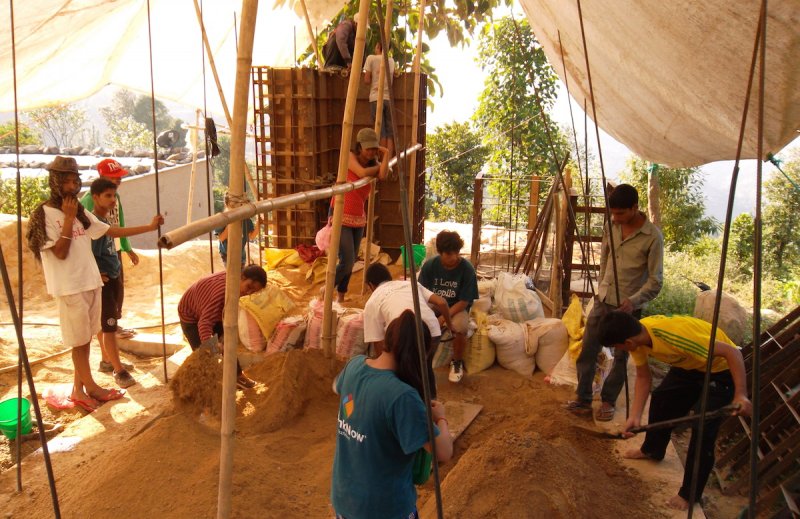
After the workshop, we hiked up the hill and set up camp on top of the ridge, with a beautiful panorama of the Himalayan range hiding behind the clouds to the north. For the next two and a half days, we assisted in mixing material and ramming the first corner piece of Sanu Maya Tamang’s new home. Sanu Maya didi and her two children, Muna and Vijay, lost their home during the earthquakes and were nominated by their community to receive Abari’s support. The construction began in June, but because of monsoon, work had to be put on hold. We were excited to jump start the process again. The initiative and teamwork shown by the students again blew us away. The volunteers rarely had to organize anything and the kids’ enthusiasm to help was inspiring.
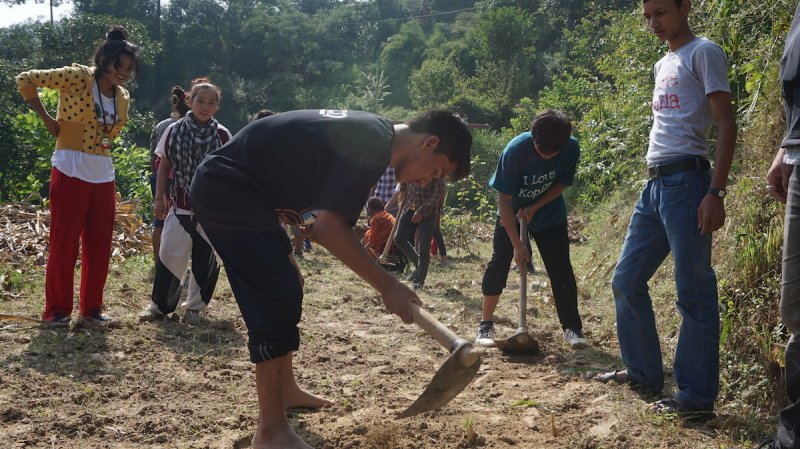
One morning of work was canceled due to rain, but it was hard to mind. We were still able to complete the first major piece of the house, and the rain cleared away the haze and gave us that beautiful panorama of the mountains we had been waiting for. Its hard to believe that you could live 15 or 16 years in Nepal and never see the big mountains but, for many of our kids, that was reality. On the morning of our final day, they emerged from their tents before sunrise to a fairytale scene with a blanket of clouds in the valley below us and all the big mountains lit up by the rising sun. They hugged and cheered and took pictures for the next hour.
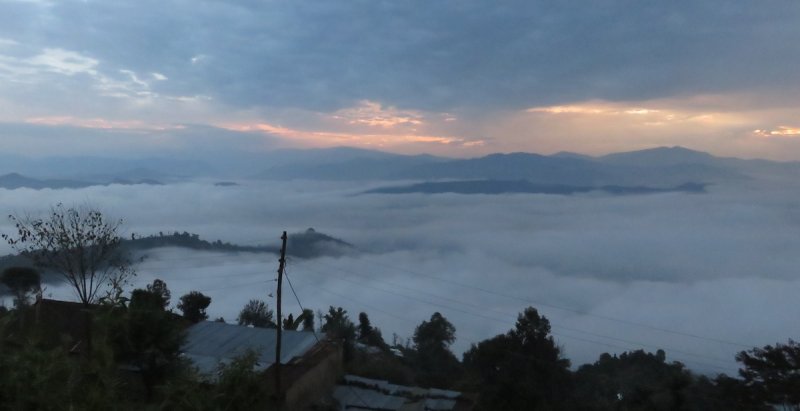
Our time with Sanu Maya ended successfully, as we removed the formwork and saw our creation. I think there was a genuine sense of pride and accomplishment with our kids, and Sanu Maya, who very rarely ever shows emotion, was all smiles as we evaluated the newly rammed wall, took pictures, and said our goodbyes.
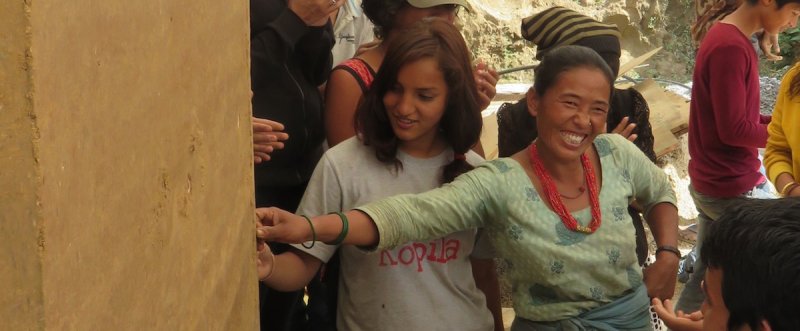
We departed Dhulikhel after lunch and moved on to the second focus of the trip. For so many years, these students had been learning about their country’s cultural and religious history from the classroom. Now it was time for them to experience it firsthand. Over the next two days, we went all over Kathmandu Valley. We saw the old city of Bhaktapur, the Durbars (ancient palaces) of Patan and Kathmandu, Swayanbhunath (Buddhist Stupa) and Pashupatinath (the holiest Hindu site in Nepal). We also squeezed in a quick trip to the ICIMOD Knowledge Park, where we learned about sustainable development specific to the Hindu Kush Himalayan environment.
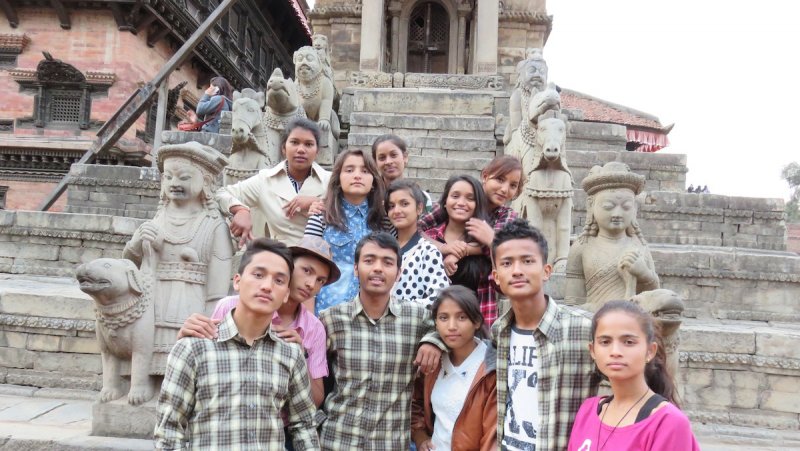
Throughout the trip, the students were exposed to an overwhelming number of inspiring people, many of them Nepali. One of our themes throughout the trip was "Nepalis for Nepal,” and we’re so fortunate that the students were able to learn from and engage with such great role models. Sometimes its difficult for young people here to understand what they are capable of, and I think exposure to such inspiring figures allows them to expand what they believe is possible for themselves and their communities.
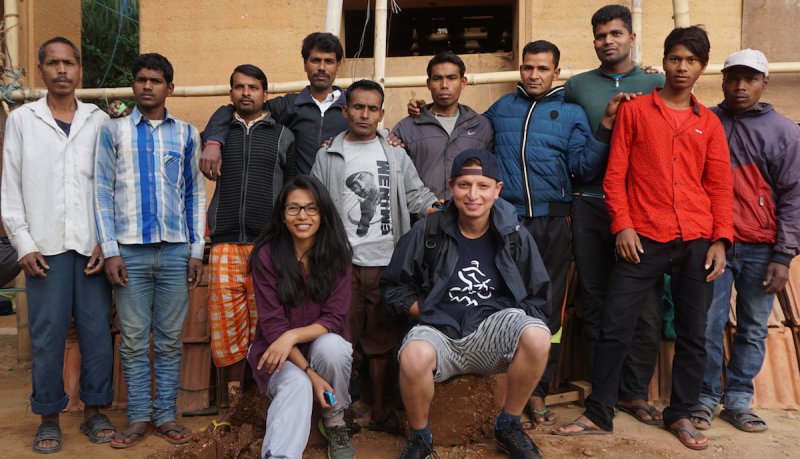
The immediate benefits of the trip are easy to see. A family’s home is closer to completion because of our help, we were given a great understanding of sustainable development specific to our area, and we saw the natural beauty and experienced the rich history of this amazing country. As these students go back to Surkhet and share stories with family and friends and begin to think about their futures and the future of their country, however, we hope this trip continues to pay dividends for many years to come.
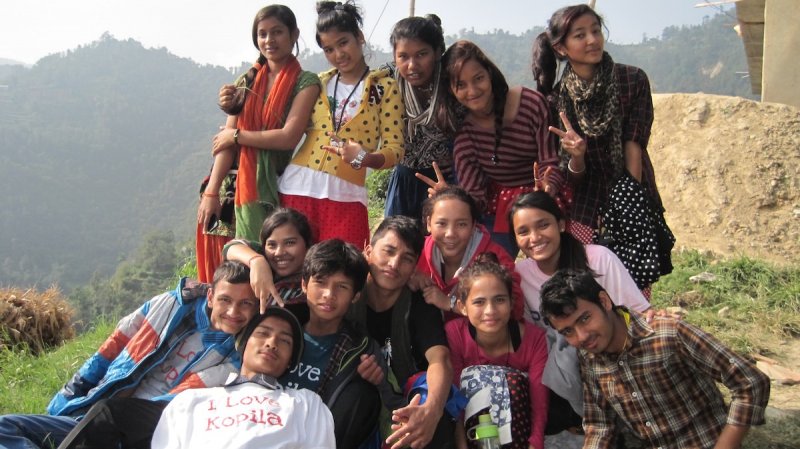
Big thank you’s abound!
- First, Abari’s Program Coordinators, Kushal, Tenzing and Saurabh, did an amazing job organizing everything in Dhulikhel and Kavre. Its not easy accommodating a young group of our size but they did it without breaking a sweat. ABARI stands for the Adobe and Bamboo Research Initiative, a leader in earth and bamboo construction and a huge reason why we have chosen to build our new school campus using the rammed earth technique.
- A huge thank you to our good friend Pemba Sherpa and the rest of the Believers team. They're a group of young, motivated Nepali citizens who jumped into action immediately after the first earthquake. They kept us warm and dry by supplying us with all the tents and sleeping bags needed for our entire group!
- The Budhanilkantha School, north of the city of Kathmandu, generously housed us for two nights while we took a tour around the various cities of Kathmandu Valley. The mattresses, hot showers, and warm blankets were much appreciated after 6 days sleeping outdoors.
- Thank you to ICIMOD for opening their doors to us on their day off. Continuing on the concept of sustainable reconstruction that was presented at Abari, it was great for students and volunteers, alike, to learn how we can live better and more responsibly within our specific environment of the Himalayan foothills.
Last, and far far from least, thank you! Your support to BlinkNow and the Kopila Valley family allowed this idea to become a reality. We couldn’t be more grateful to you!
Part 2 of 2 | Read the first installment ›